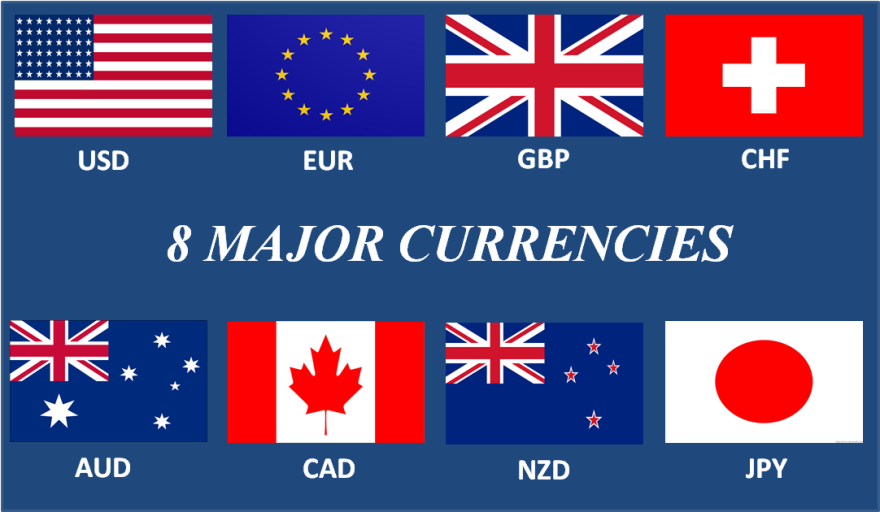In today’s interconnected world, understanding foreign exchange (forex) rates is crucial for navigating global markets, facilitating international trade, and informing investment decisions. With 20 major global currencies shaping the landscape, knowing the dynamics that drive their exchange rates empowers individuals and businesses alike. This comprehensive guide will delve into the significance of forex rates, exploring the factors that influence their fluctuations and unraveling the complexities associated with these critical financial indicators.
Deciphering Forex Rates: A Foundation of Global Trade
Forex rates represent the values of currencies relative to one another, dictating the exchange rates between different economies. They are the fundamental mechanism that enables international trade, allowing businesses to transact, settle payments, and facilitate seamless transfer of goods and services across national boundaries. Forex rates continuously fluctuate, guided by a complex interplay of economic, financial, and political factors.
Influencing Factors: Unveiling the Dynamics of Forex Movement
Understanding the forces that shape forex rates is paramount for effective decision-making in the global financial arena. A multitude of factors contribute to these fluctuations, including:
- **Economic Indicators:** Economic growth rates, inflation, unemployment levels, and interest rates all influence forex rates, reflecting the overall economic health of a nation. Currency values typically appreciate in countries with strong economic growth and positive economic fundamentals.
- **Political Stability:** Political events and stability impact investor confidence and, consequently, currency values. Political instability, conflicts, or changes in government can lead to currency depreciation.
- **Central Bank Policies:** Central banks play a significant role in influencing forex rates by setting interest rates and implementing monetary strategies. Interest rate decisions affect the attractiveness of a currency for investment and influence its exchange rate.
- **Supply and Demand:** The forces of supply and demand also dictate forex rates, with currencies experiencing higher demand and limited supply appreciating in value. Factors such as global economic developments, international trade flows, and capital inflows can affect supply and demand.
- **Market Sentiment:** Investor sentiment and market psychology can have a significant impact on forex rates. A positive outlook on a country’s economic prospects can lead to currency appreciation, while negative sentiment may trigger depreciation.
Scanning the Forex Landscape: Delving into 20 Major Currencies
The forex market consists of numerous currencies traded worldwide, but 20 currencies dominate daily trading volume, representing the economies of developed nations and emerging markets alike. Here’s a closer look at each:
- **United States Dollar (USD):** The world’s dominant reserve currency, paired with others in USD-based currency pairs.
- **Euro (EUR):** The official currency of 19 EU nations, the second most-traded currency globally.
- **Japanese Yen (JPY):** The third most-traded currency, known for its safe-haven status during periods of global uncertainty.
- **Pound Sterling (GBP):** The currency of the United Kingdom, 4th most-traded worldwide.
- **Swiss Franc (CHF):** Considered a safe-haven currency during periods of economic turmoil.
- **Canadian Dollar (CAD):** Linked to the price of oil, Canada’s major export.
- **Australian Dollar (AUD):** Also linked to commodity prices, particularly gold and iron ore.
- **New Zealand Dollar (NZD):** Known as the “Kiwi,” influenced by New Zealand’s agricultural and tourism industries.
- **Swedish Krona (SEK):** Sensitive to changes in global demand for Swedish exports.
- **Norwegian Krone (NOK):** Heavily impacted by Norway’s oil and gas industry.
- **Danish Krone (DKK):** Interlinked with the economies of its Scandinavian neighbors.
- **Polish Zloty (PLN):** Represents the growing economy of Poland, an EU member state.
- **Czech Koruna (CZK):** Tied to the Czech Republic’s industrial sector.
- **Hungarian Forint (HUF):** Sensitive to the political and economic climate of Hungary.
- **Turkish Lira (TRY):** Influenced by Turkey’s central bank policies and political developments.
- **South African Rand (ZAR):** Reflects the economic trajectory of South Africa, the largest economy in Africa.
- **Indian Rupee (INR):** The official currency of India, influenced by its booming IT and pharmaceutical industries.
- **Chinese Yuan (CNY):** Also known as the Renminbi, it represents the world’s second-largest economy.
- **Mexican Peso (MXN):** Linked to Mexico’s oil industry and trade with the United States.
- **Brazilian Real (BRL):** Reflects the economic growth and political stability of Brazil, Latin America’s largest economy.
Conclusion: Mastering Forex Rates for Informed Decision-Making
Navigating the intricacies of forex rates is not for the faint of heart. Yet, unlocking an understanding of these critical financial indicators empowers individuals and businesses to make informed decisions within the global marketplace. Whether it’s understanding the impact of economic data releases, gauging political stability, or tracking central bank actions, mastering forex rates offers a competitive advantage.
Staying abreast of the latest trends and developments in forex rates is vital for those looking to thrive in today’s interconnected world. Consulting credible financial sources, monitoring market news, and engaging with financial experts will contribute to a deeper comprehension of these complexities. By embracing the intricacies of forex rates, you open the door to unlocking opportunities and mitigating risks, whether you’re a seasoned trader or an individual seeking to make informed financial decisions.

Image: www.forexstrategieswork.com

Image: surgetrader.com
Forex Rate Of 20 Currencies
https://youtube.com/watch?v=NEwDxqx0JOg






